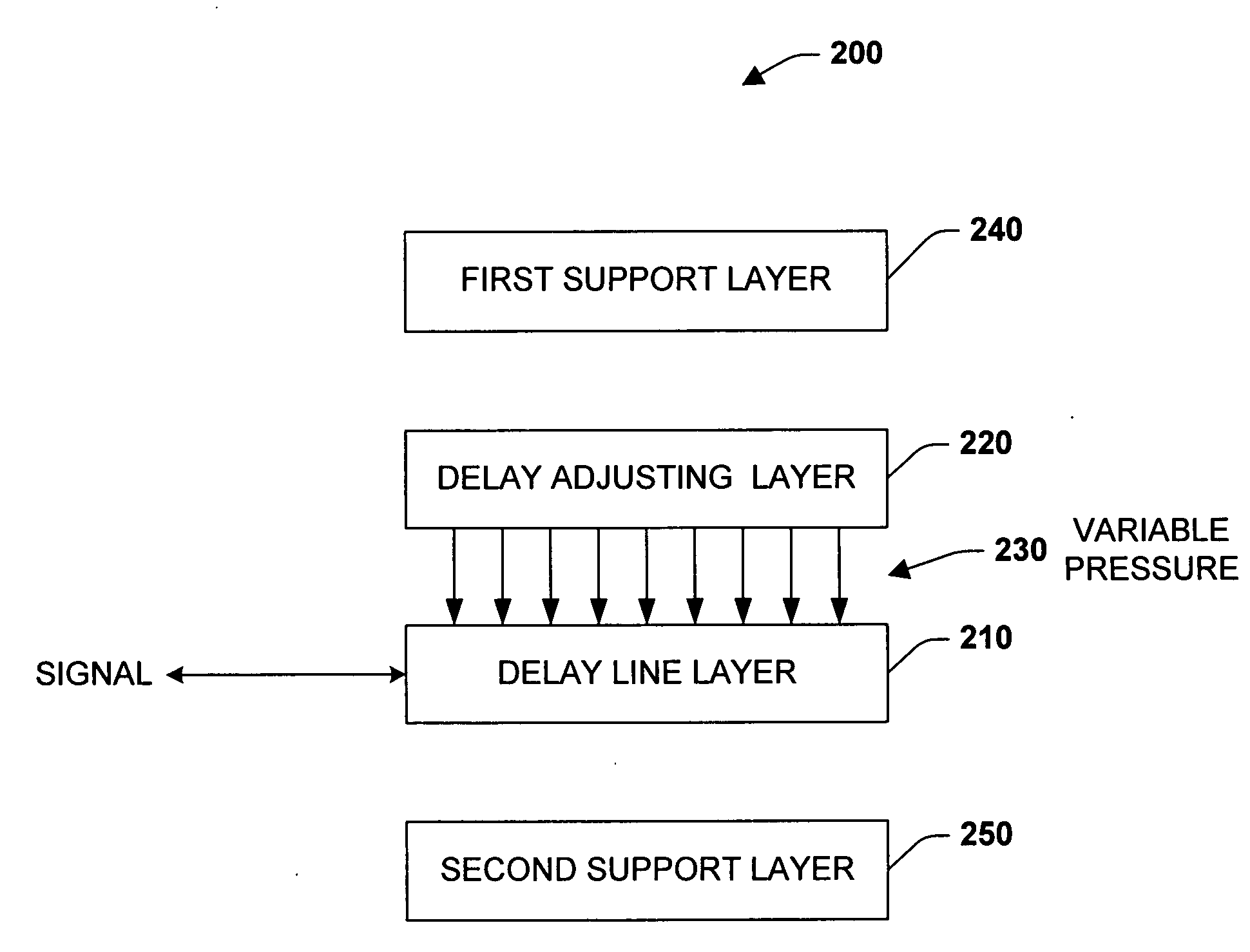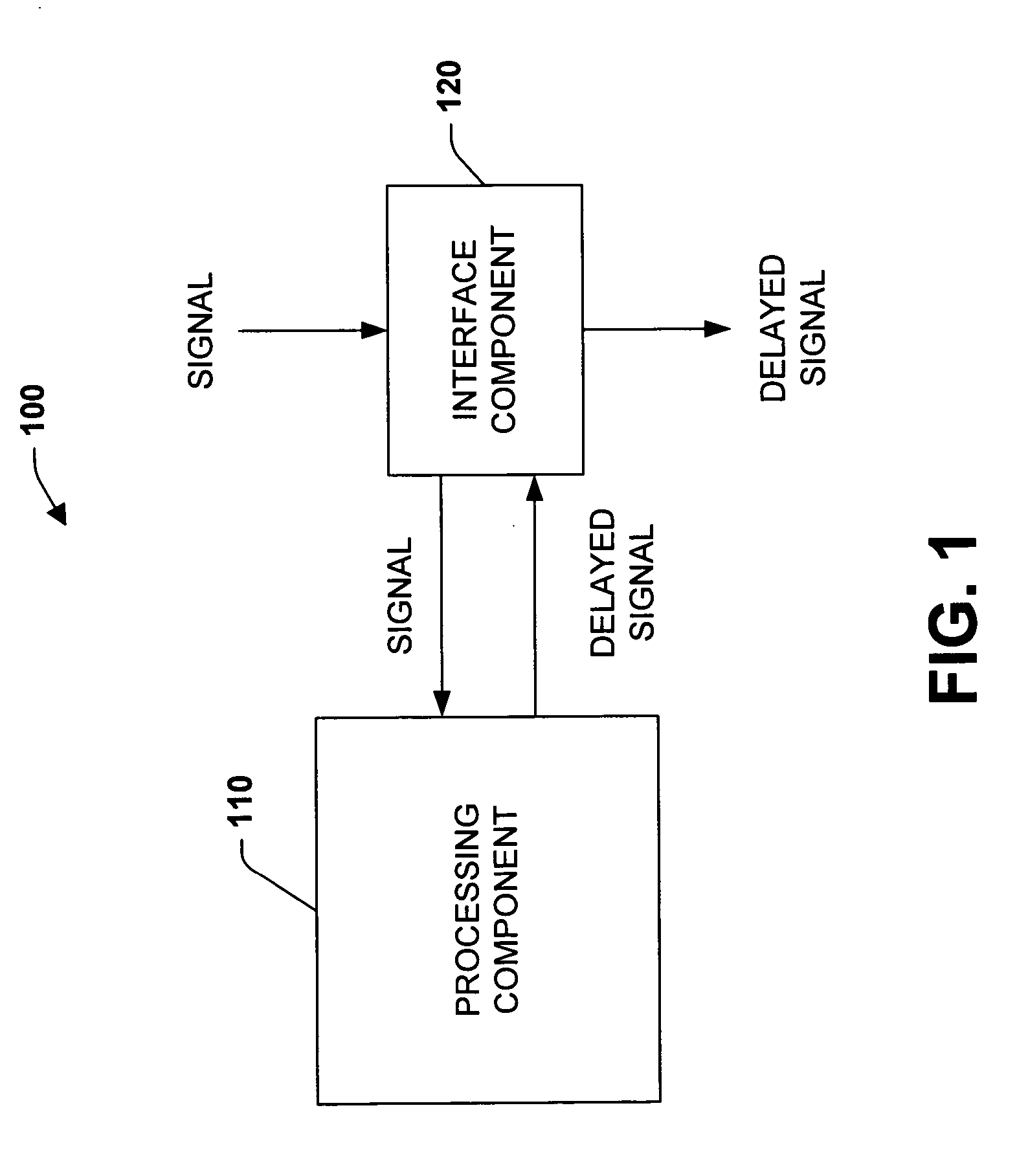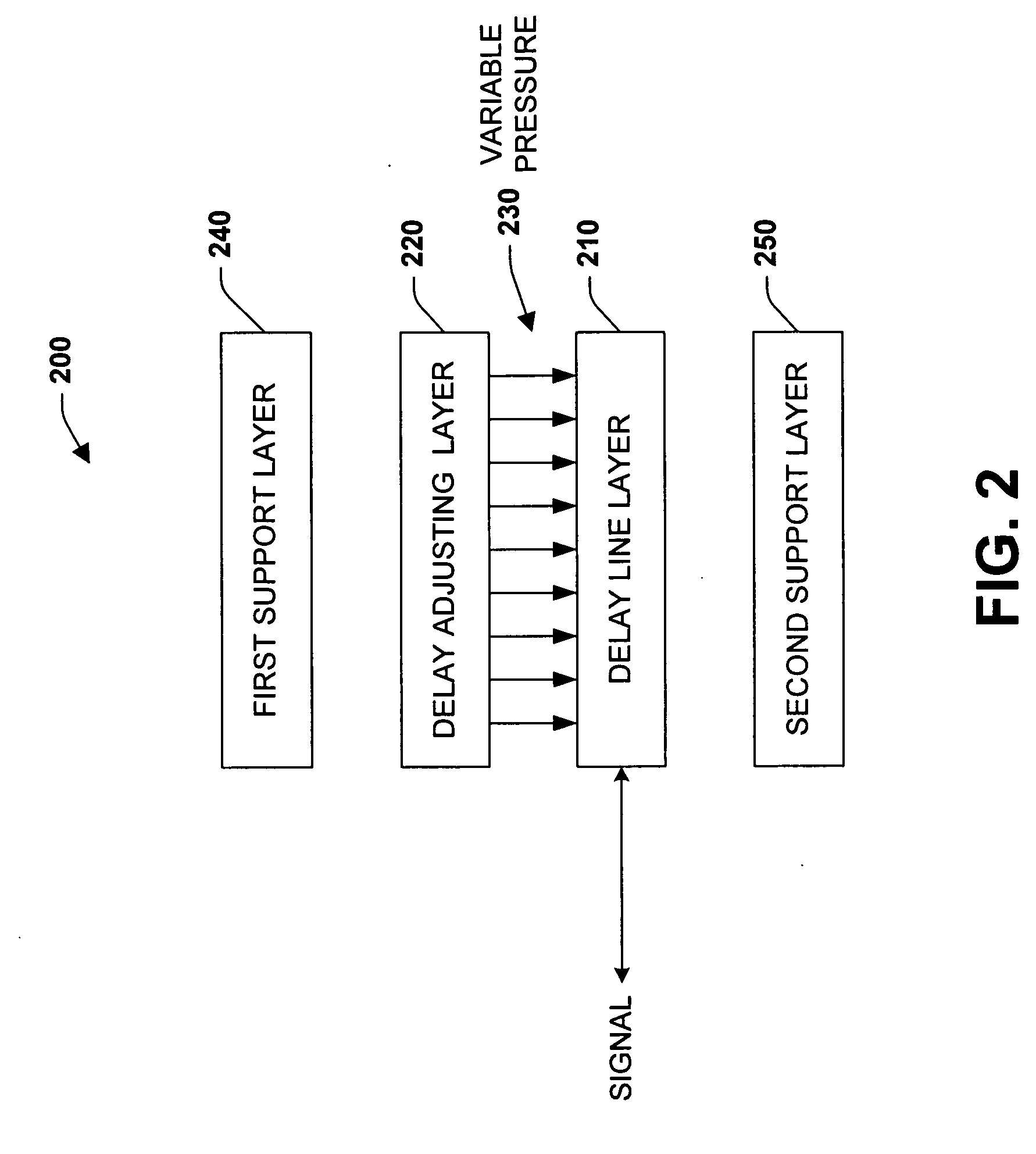Systems and methods for a continuously variable optical delay line
a continuously variable, delay line technology, applied in the direction of optical light guides, optical waveguide light guides, instruments, etc., can solve the problem that the continuous delay line loses virtually no information when the continuous delay changes, and achieves the effect of high and tunable time-bandwidth components, improved communication, and reduced cos
- Summary
- Abstract
- Description
- Claims
- Application Information
AI Technical Summary
Benefits of technology
Problems solved by technology
Method used
Image
Examples
Embodiment Construction
[0035] The present invention provides systems and methods that employ a continuously variable optical delay line to introduce a delay in a transmitted optical signal. In many instances, such systems and methods can be utilized to increase a communication system's performance via providing a wide bandwidth signal delay over a long adjusted duration. By way of example, the systems and methods of the present invention can be employed to provide a high time-bandwidth product delay line that processes narrowband signals in wide spectra. Additional capabilities include true time delay beam forming with very long baselines that yield high accuracy angle of arrival detection and continuously variable programmable delay with high resolution and accuracy that provides repeatability and stability over long time periods and wide temperature ranges. In addition, the systems and methods of the present invention can be relatively inexpensive, compact in size, and rugged in construction.
[0036] The...
PUM
 Login to View More
Login to View More Abstract
Description
Claims
Application Information
 Login to View More
Login to View More - R&D
- Intellectual Property
- Life Sciences
- Materials
- Tech Scout
- Unparalleled Data Quality
- Higher Quality Content
- 60% Fewer Hallucinations
Browse by: Latest US Patents, China's latest patents, Technical Efficacy Thesaurus, Application Domain, Technology Topic, Popular Technical Reports.
© 2025 PatSnap. All rights reserved.Legal|Privacy policy|Modern Slavery Act Transparency Statement|Sitemap|About US| Contact US: help@patsnap.com



